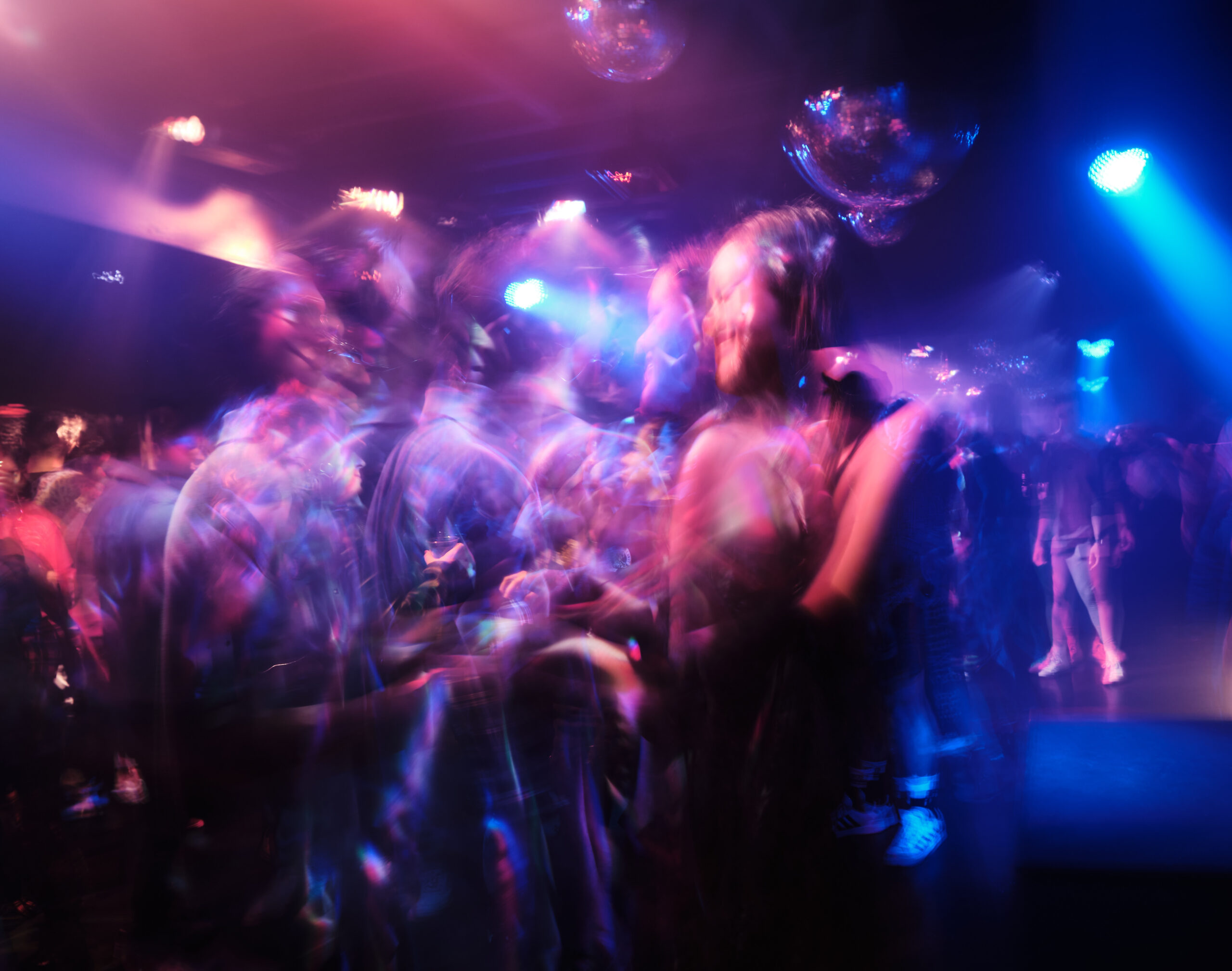Teetering mountains of clothing filled the apartment. Here and there, I could identify patches of fabrics—neon polyester, black latex, rhinestone-encrusted fishnets, and crumpled tulle. A yellowing Singer sewing machine sat atop plastic IKEA drawers overflowing with costume jewelry. On a pile of clothing hangers in an open suitcase, a black cat perched.
Jovanni Cabanas, who uses they/them pronouns, considered themself in a flimsy mirror, their face illuminated by a ring light. To their right was a lime green television tray packed with dusty jars of makeup brushes, stacks of eyeshadow palettes, and one can of Mango Loco Monster Energy Drink. Jovanni had secured their hair in place with a wig cap made from a cut nude stocking. It had a hole at the top, a tuft of dark curly hair sprouting through. Jovanni, though six feet tall, has a gentle way of holding themself. Their shoulders slope downwards—the curve of their back a concave “C.” Jovanni unscrewed various makeup jars, laying out a selection of tools. They began by slicking back their eyebrows with a purple Elmer’s glue stick.
Jovanni is a drag queen. They were preparing for a performance at Partners, a gay club in New Haven. Their makeup routine took at least two hours, starting with three coats of a custard-like foundation. While waiting for each layer to dry, Jovanni fussed over my comfort. I assured them that I didn’t mind their cat Tux’s newfound interest in wrapping himself around my legs (he was a kitten, Jovanni explained), that I wasn’t cold with the window open (Jovanni was prone to overheating), that it was fine to leave a muted episode of Charmed on the television (it was a part of Jovanni’s preshow routine), and that I hadn’t minded the drive to Jovanni’s apartment in Hartford (they always got ready at home).
Jovanni performs under the drag name Xiomarie LaBeija (Xiomarie, I was told, uses she/her pronouns). Xiomarie is a regular presence at certain clubs and restaurants throughout Connecticut and Massachusetts. She also performs at Pride parades, college LGBTQ events, charity fundraisers for queer advocacy groups, and once, a retirement home.
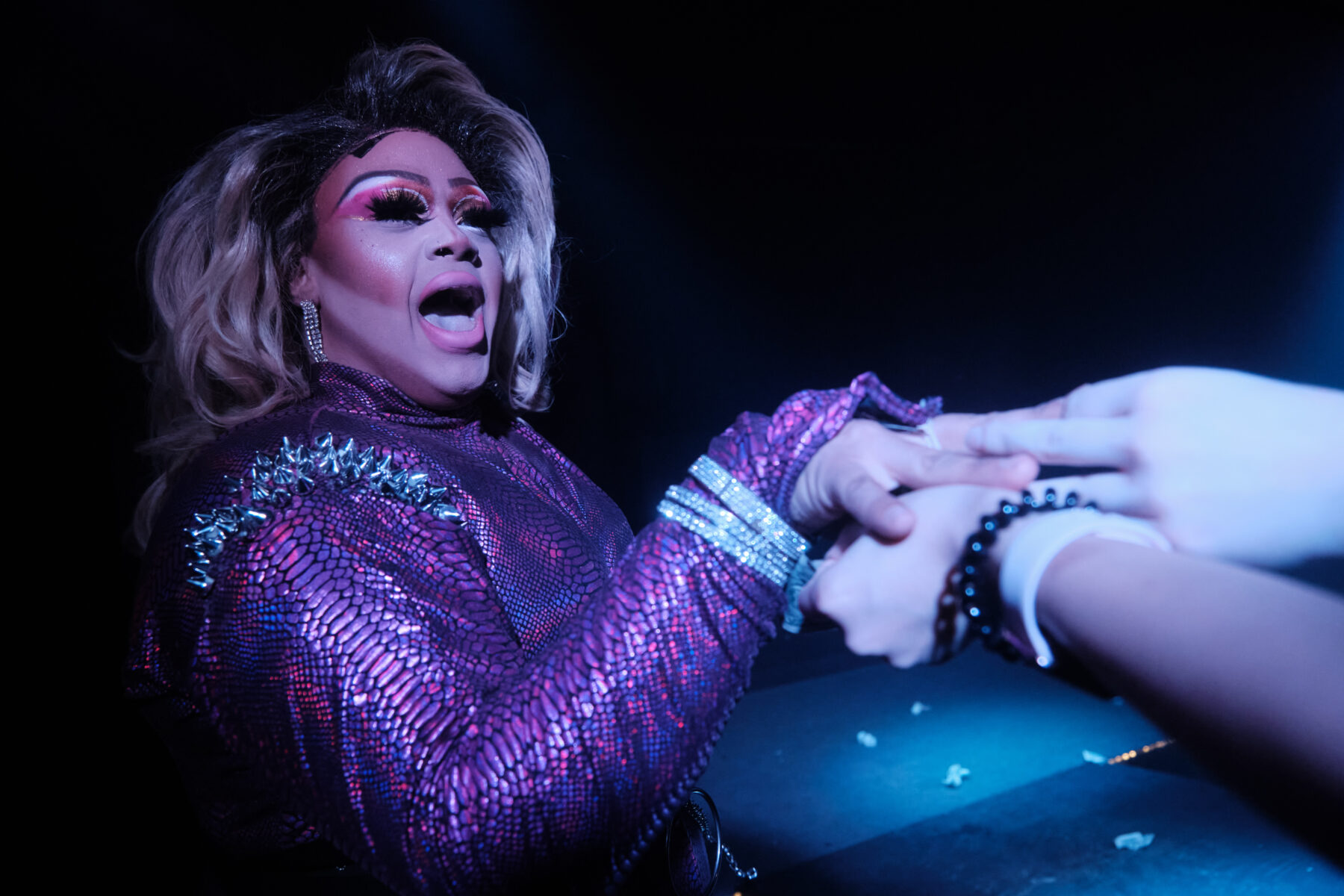
Xiomarie is not the thin, white drag queen you would expect to see on an episode of RuPaul’s Drag Race, which has been criticized for forwarding conventional beauty standards. Jovanni, now in their late twenties, is Afro-Latinx, gender nonbinary, and plus-sized (they sometimes refer to Xiomarie as “Xiomarie XL”). They told me that race and gender prejudices run rampant in the business, and it’s not easy to get opportunities when you don’t resemble the archetypical drag queen (thin and white). Drag, once a subculture forced to remain underground, has now come to resemble most other entertainment industries, luring people in with the promise of fame and money. Its proliferation is driven by mainstream programs like RuPaul, which purport to pluck queens out of obscurity and deliver them to the Met Gala or the pages of Vogue. This is the world that Jovanni exists within—one that promises a neoliberal color- and gender-blindness while chasing the approval of institutions that opened their doors only when they realized that drag sells.
For Jovanni, though, drag was a calling. They spent most of their childhood in Bridgeport, Connecticut as “that fat gay boy.” At 18, they were introduced to drag at a small gay club in Bridgeport—the only of its kind at the time. Watching the performance, Jovanni had three thoughts in rapid succession:
- I can totally do that.
- I totally want to do that.
- I’m totally going to do that.
There is a steep learning curve to drag. Before drag makeup tutorials became commonplace on YouTube, most queens learned their professions through mentors. Many join “drag families,” where older members called “drag mothers” take in fledgling performers. In a community where biological relationships may be strained, these family units provide necessary support. They also function as apprenticeships: older members train younger ones in presentation and performance. Jovanni learned how to vogue—a style of dance inspired by fashion model poses—from their drag mother. Their drag family was also an early and crucial source of queer solidarity. It’s a tradition that Jovanni has carried on with their own drag daughters.
Drag families are also important because jobs aren’t easy to find, especially paid ones. Fledgling queens might be asked to perform for free drinks or “exposure.” More established queens will bring their drag daughters on as supporting acts, helping them find a foothold in the business. But even so, few drag queens make enough money to perform full-time. Jovanni has often had to work two or three jobs on top of performing. They recently got a full-time job as a caseworker at A Place to Nourish your Health, a Connecticut nonprofit that provides services for people impacted by HIV/AIDS, substance abuse, and mental illness.
This is the world that Jovanni exists within—one that promises a neoliberal color- and gender-blindness while chasing the approval of institutions that opened their doors only when they realized that drag sells.
In Connecticut and Massachusetts, established queens are usually paid a flat fee of one to two hundred dollars per performance. These flat rates are barely enough to cover the cost of costumes, makeup, and transportation. Cash tips are what might make a performance “worth it” for Jovanni, in terms of money invested versus money made. But tips are notoriously unreliable. Fewer and fewer people carry cash these days, and audiences that are new to drag may not understand tipping. Jovanni has adapted by advertising their Venmo account before and after performances. They have also always been frugal—driving a fifteen-year-old car that doesn’t have heating and improvising drag outfits from discount Halloween stores.
So why do they continue to do drag? Jovanni is full of aphorisms like “representation matters” and “everyone is equal.” These phrases mean more coming from someone like Jovanni, who truly believes that seeing a drag queen (especially a plus-sized one of color) could change someone’s life. And why not? It changed theirs.
As Jovanni puts it, “The conversation changes once I perform. I don’t think you’ve ever seen someone who’s three hundred pounds do handstands while lip-syncing.”
♦♦♦
Drag began as female impersonation. At one time, the success of a drag was judged on a cis man’s ability to pass convincingly as a cis woman. It was about creating a feminine silhouette—tucking genitalia up and away, padding the breasts and hips. It was about erasing masculine features from the face—softening a jaw, paring back the brows. Julian Eltinge, a female impersonator at the turn of the twentieth century, sold out shows and scored astonished reviews in major newspapers. Eltinge became something of a fashion icon to women, who flocked to his shows to take note of his stylish gowns and exquisite posture. Though one is not necessarily indicative of the other, female impersonation has long been associated with homosexuality, so Eltinge had to work hard offstage to prove otherwise. He gave interviews about his upbringing on a farm and his interest in duck hunting. Being perceived as gay was dangerous at the time. Police often raided gatherings where men reportedly dressed like women. Attendees were arrested for “social vagrancy”—code for homosexuality. As historian Sharon Ullman puts it, the public has tended to “read sexual practice onto public gender presentation.”
Around the same time as Eltinge was on Broadway, the formerly enslaved William Dorsey Swann held secret cross-dressing balls for Washington, D.C.’s gay community. Swann took on great personal risk in throwing these parties, which were attended by other formerly enslaved Black men. He was arrested several times and sent to prison at least once. Writer Channing Gerard Joseph claims that, as the leader of his circle, Swann was known as the “queen of the drag”—“drag” being a portmanteau for “grand rag,” a term for a masquerade ball. This, Joseph argues, would make Swann the first known drag queen.
Swann makes a fitting predecessor to Harlem’s balls of the nineteen-seventies and nineteen-eighties. These balls were almost entirely populated by Black and Brown members of the queer community, who gathered to compete in events evocative of beauty pageants. Sometimes the contests were judged on “realness”—the ability to pass convincingly as the aspirational object, which could range from a businessman to a military officer, a gangster to a schoolgirl. Other times, contestants were judged on stylistic and dramatic flair.
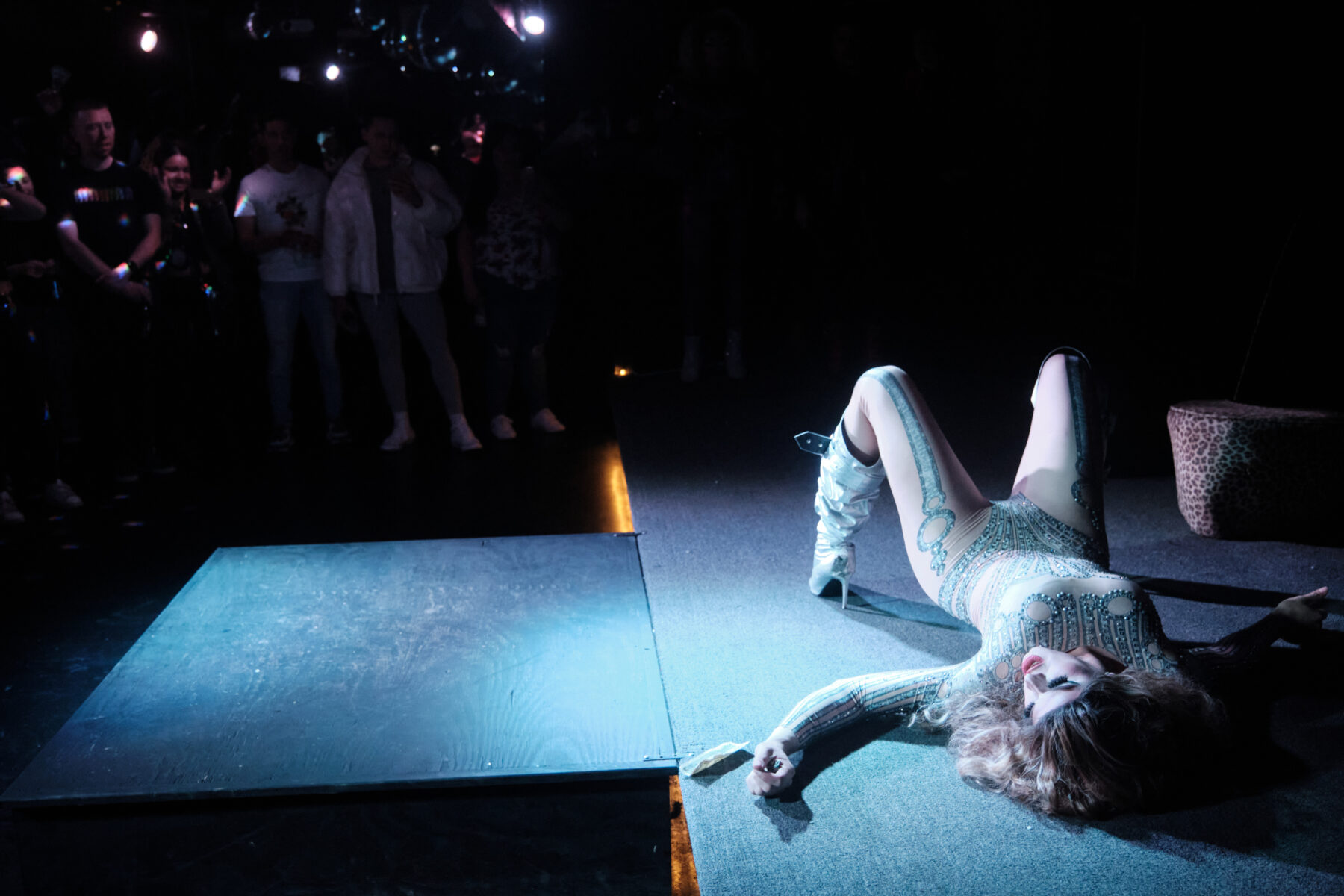
Ballroom culture was immortalized by Jennie Livingston in her 1990 documentary Paris is Burning. The film is credited with introducing the underground subculture to mainstream audiences, but it’s often overshadowed by the controversy surrounding Livingston, a queer, white Yale graduate who has been widely criticized for not compensating her subjects despite the film’s considerable profits. The documentary depicts the balls as raucous and joyous gatherings of a vulnerable community. The specter of poverty, homelessness, and the coming AIDS crisis looms large. Inside the ballroom, though, a queen, draped in billowing gold lamé and donning black opera gloves, saunters down an improvised catwalk. Audience members fling their hands back in mock-swoons.
Notably, the documentary also features “drag houses,” which is a grandiose way of describing a multigenerational drag family. “House” is borrowed from the term for royal bloodlines, as in “of Windsor.” Belonging to a house allows you to claim an artistic lineage; the best houses can often trace their roots back to these Harlem balls. (Jovanni belongs to the House of LaBeija, which touts itself as the first drag house.)
Today, drag queens can be found performing anywhere from boozy brunches on the Upper East Side to children’s story times at public libraries. RuPaul’s Drag Race has won four Emmys and inspired six spin-offs. As drag has found new audiences, it has also found new practitioners. Trans and cis women, as well as nonbinary people have established forms of drag. Drag has long been tied to public and private expressions of the queer self, whatever form that may take.
♦♦♦
In Hartford, Jovanni drew out the contour of their nose with an even hand. They left this unblended. They overlined their lips into a pink pout. As I watched them carve out the shadow of a cheekbone in a deep brown, Jovanni promised, “It’ll all come together.”
Drag is meant to be an exaggeration. Lashes are often inches long and thick as caterpillars. Wigs are voluptuous and flowing. The point is to sell a fantasy, but not the fantasy of the ‘ideal woman,’ or at least not one you might imagine gracing the cover of Sports Illustrated or Cosmopolitan. Drag is femininity in the extreme, so extreme that it might defy femininity altogether. There is no illusion of realism. Drag is a satire of gender performance, asking, ‘what is gender anyways?’
Drag removes the body from what it means or what it should be. The body just is.
Jovanni might know better than anyone. They’ve moved through a spectrum of gender identities—cis man, trans woman, nonbinary person. When they first entered the drag community, Jovanni thought they were a gay man trying out a new form of self-expression. Xiomarie, their drag alter ego, was just one facet of themselves. But Jovanni never felt quite at home in their masculinity. At college and away from home for the first time, Jovanni started identifying as a trans woman. They wore their hair long, used she/her pronouns, and went by Xiomarie. It was easy to pass, but being Xiomarie all the time didn’t feel authentic. “I realized I needed to take her off,” Jovanni told me. “I almost lost myself.”
The transition also stopped, in part, because Jovanni moved home with their mother. They grew up in a traditional Christian family, where church was a big part of everyday life. Jovanni’s mother believed that homosexuality was a sin and that Jovanni’s queer identity was a curse. Jovanni said, “For years, I’ve compromised my identity just to make sure that I wasn’t disappointing her.”
Early this year, Jovanni had a breakthrough with their mother. During the last hour of a long drive back from Baltimore (where Jovanni had two very successful gigs), their mother called. Jovanni’s brother had always been supportive and, unbeknownst to Jovanni, had confronted their mother about her relationship with Jovanni. He knew that Jovanni’s strained relationship with their mother was preventing Jovanni from fully embracing their identity.
During this call, Jovanni finally told their mother about being nonbinary. They also told her about their career as a drag queen. To Jovanni’s surprise, their mother was supportive.
“We were able to break down boundaries and barriers that have been up for so long,” Jovanni told me, “And I was able to hear words that I’ve never thought—even in my dreams—I would hear.” Jovanni felt that a burden had been shed, that they could finally be themselves in all facets of their life.
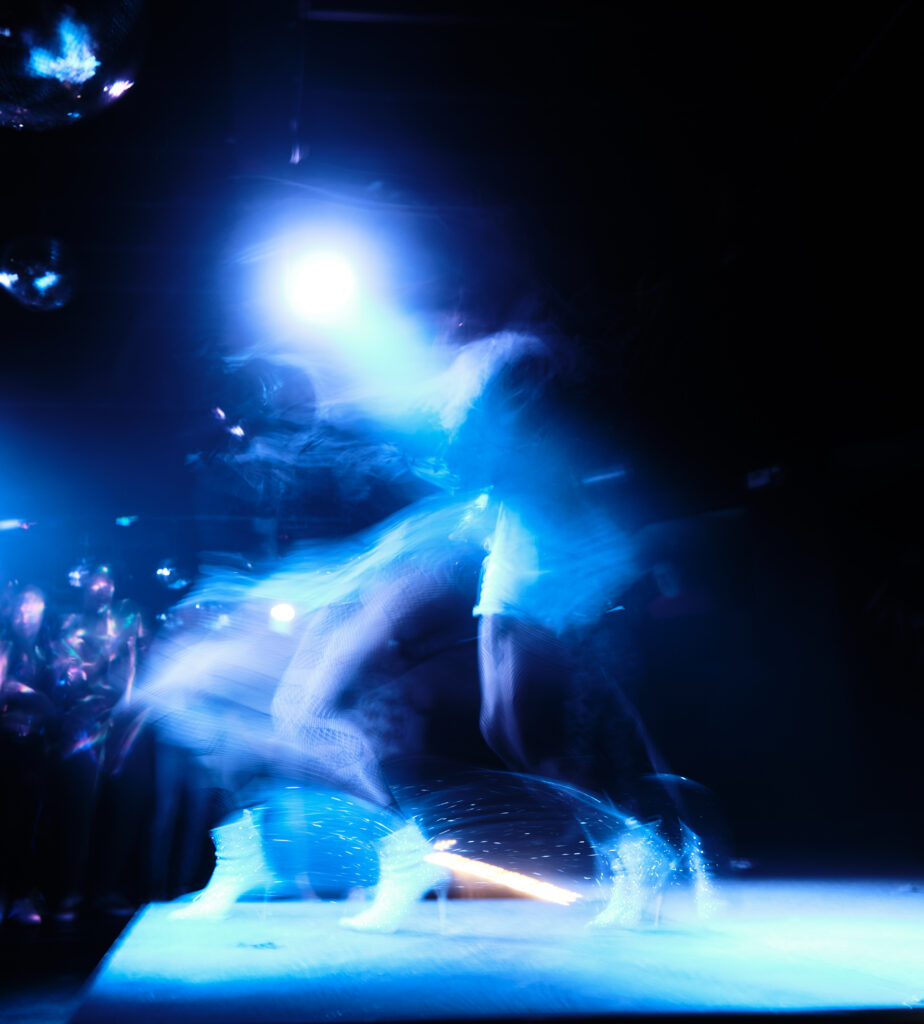
What does drag mean to someone who has struggled with expressing their queerness? It might seem odd that someone who has rejected the gender binary would come to embrace an art form that seems to be a performance of gender in the extreme. But as queer scholar Nick Cherryman writes, “Much of mainstream drag comes to represent another gender altogether removed from, yet integrally linked to, the social idea of the gender binary…The ‘drag queen gender’ [exists] in the queer-‘other.’” Drag isn’t easily categorized into male or female gender expression. It is a form of gender expression within itself. It has its own gender norms—expectations of social behavior, physical appearance, and sexual preferences. These norms are enforced, like most gender stereotypes, by both in- and out-group members. In a subculture under much public scrutiny, the expectations may be more stringent.
Drag is a performance much like—à la Judith Butler—all gender is a performance. It’s a testament to Jovanni’s skill as a performer that I found it difficult to pinpoint the moment Jovanni became Xiomarie. I asked them if there is a particular moment when they feel themselves stepping into another identity. “When I have those lashes on,” Jovanni said, “honey, you can’t tell me anything.”
♦♦♦
Jovanni and I parted ways at their apartment in Hartford, taking our own cars to the venue. When I arrived at Partners in New Haven, it was Xiomarie I found. She was in a makeshift dressing room in the dingy basement of the club, putting the final touches on her look. Xiomarie wore a tie-dyed leotard with sewn-on yellow mesh sleeves, trimmed with large rhinestones. Paired with a flouncing and voluminous pink wig, it gave the effect of an nineteen-eighties aerobics instructor to the nth degree.
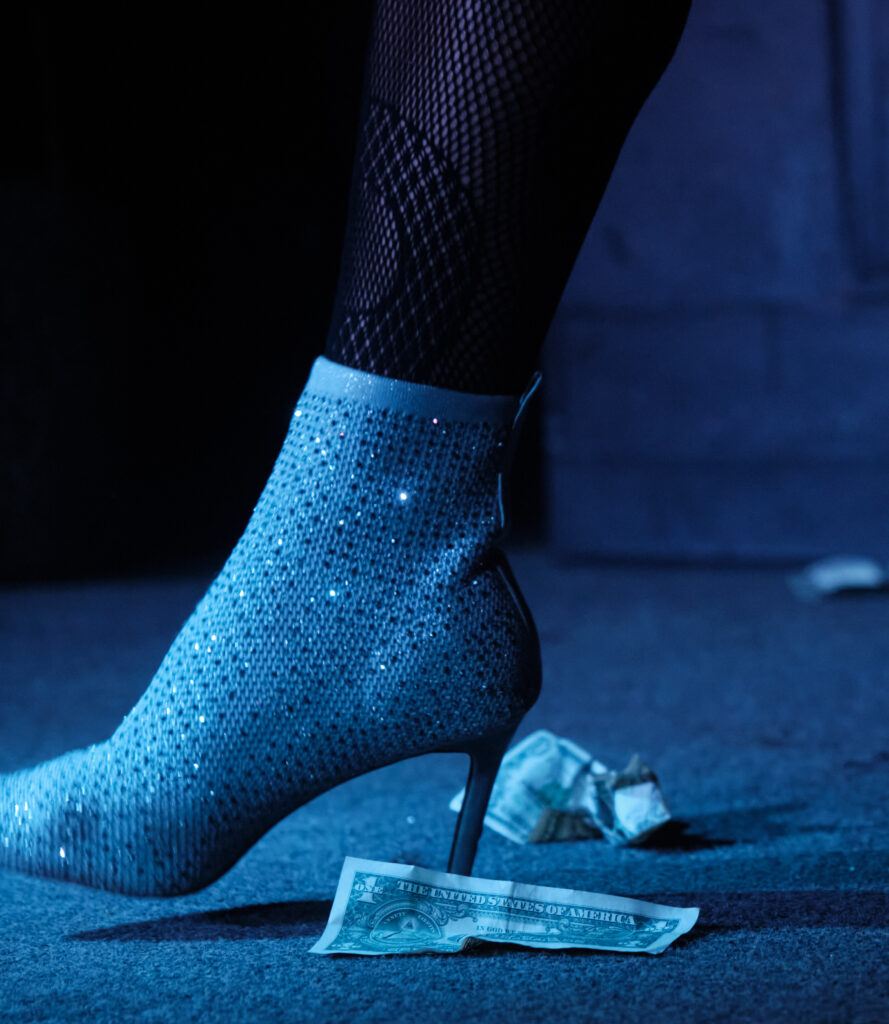
The club was packed, leaving little room between Xiomarie and her audience. The closeness made the physicality required for her routine all the more obvious. When Xiomarie flung her leg into a perfect high kick or launched herself off the stage directly into a split, you could feel her movement through the air, hear the thud of her heeled boots against the floor.
This was a six-foot tall, three-hundred-pound person executing a five-minute dance routine with the pep and stamina of a Dallas Cowboys cheerleader. As promised, everything came together in the performance. The makeup was meant to be seen in movement. Even from across the club, you could make out every lip-synced word and dramatic wink. The wig clung to place through each hair flip and somersault. (I later learned that Xiomarie had duct-taped the wig to her scalp.) Between the headstands and the triple axel, but before the closing death drop, Xiomarie had worked the crowd into a fervor. They jostled against each other to get a better view. They cheered so hard their vodka sodas splashed onto their neighbors. Those who had brought cash were frantically waving it, which Xiomarie collected with appropriate dramatic flair.
This was a six-foot-tall, three-hundred-pound person executing a five-minute dance routine with the pep and stamina of a Dallas Cowboys cheerleader.
Drag is a fantasy that engages both the performer and the audience. There are meaningful comparisons to be made between drag and stripping, as queer scholar Sarah Hankins notes. Some queens, like strippers, create intimate and even erotic connections with audience members. There may be individualized attention, the allowance of some touch, or a privately shared smile. Like strippers, drag queens rely on cash tips and know how to get them. Like strippers, drag queens work in the medium of their body. There is the flourish of an arm, the swivel of a hip, the extension of a leg. There is something sensual and heady about the performance and its proximity. You feel that, perhaps, you can share in the queen’s beauty.
By the end of Xiomarie’s set, the stage was littered with crumpled bills. The hostess, a drag queen in a red Jessica Rabbit dress named Kiki Luca, commanded “white twinks” in the audience to get on all fours and collect the money. In the tittering commotion, Xiomarie disappeared into the back of the club.
In the dressing room, I found Xiomarie draped over a velvet sofa, trying to catch her breath. The other queens were either recovering from or preparing for their own performances. It looked like a beauty store had exploded. All over, there were open bottles of loose glitter, disembodied mannequin heads (for wigs), tins of translucent powder, and all sorts of serums and glues and creams. Xiomarie seemed to be taking it all in—the cacophony of queens trading barbs and the din of the crowd upstairs, the soft blanket of cigarette smoke and hairspray settling over the room.
I was watching from my own corner, thinking about how drag returned the body to itself. Drag removes the body from what it means or what it should be. The body just is.
Back in the dressing room though, Jovanni had more important things to do than agonize over the phenomenology of it all. There was only one hour between the first and second show and an entire costume change to execute. Tape was readjusted, dresses shimmied off, wigs swapped, powder reapplied to every crevice.
After all, the show must go on.
—Serena Lin is a junior in Branford College.


